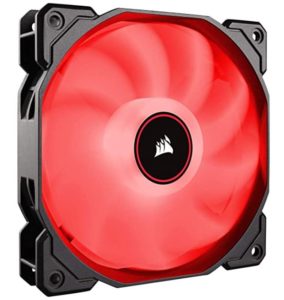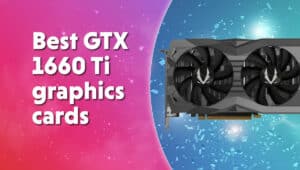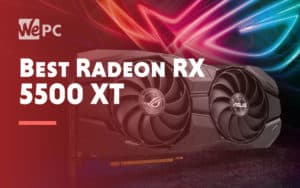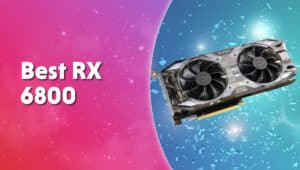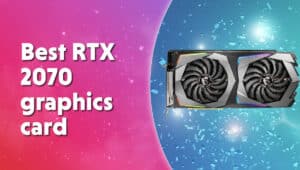Best 120mm Fan
The Top 5 120mm Fans For 2021
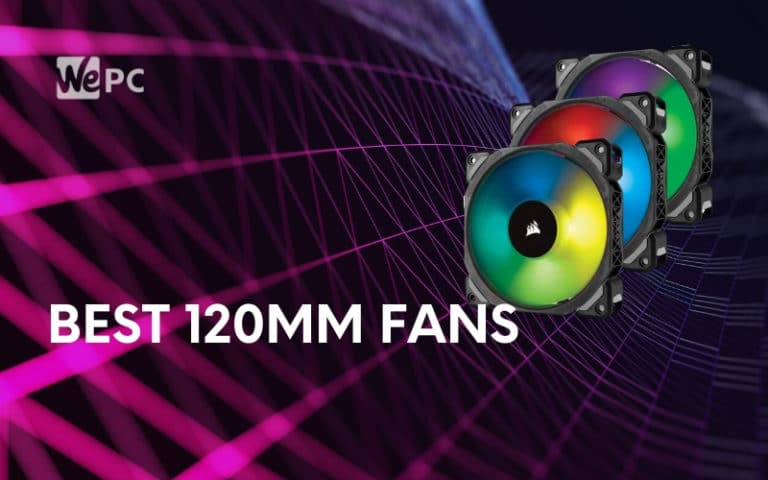
You’re here because you want to know the best 120mm fan for your PC build. However, we know that the process of picking out the right model can be draining: how do you choose when the market is overflowing with options?
To make the process simpler, we have compiled this comprehensive buying guide. We’ll talk about what you need to look out for, the various types of case fans, and most of all: the best 120mm fans that are currently available.
You can’t have a good PC without adequate cooling — that’s a fact. No matter how good the other components are, they will not be able to do their best if we don’t provide them with the right temperature environment. When properly cooled, all of your important components — the GPU, the CPU, RAM and more — perform well regardless of what you’re doing. Whether you’re a gamer that plays all the latest titles or a semi-regular user, cooling is always a good investment. This is where case fans come in. Through various means of cooling, they help you keep your PC happy with temps that never reach too high to be strenuous. This ensures that you don’t suffer from annoying things like FPS drops or low performance, but also that your components have a longer lifespan.
Anyway, without further ado, let’s get into it!
Our Top Picks

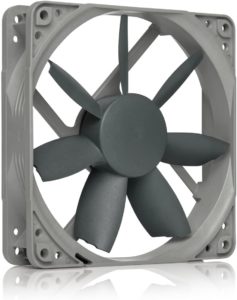
How We Choose
The process of choosing the right products for our guides is a rather long one. We don’t go in blind and recommend the first thing that we find. In fact, there are many products that don’t quite make the cut and aren’t featured in our guides. The reason for that is simple: we want to make sure that your hard-earned money is going to be spent in the best way possible.
When compiling our list of five best 120mm fans, we started with thorough research. We’ve read all the specs, compared them to other models, and then dived straight into performance benchmarking. Next comes the user feedback. We trust that other users like you (and like us) are among the best sources of information when it comes to PC building.
Once all of that is done, we move on to testing, which is arguably the best part of our research and it gives us all the information we need to deem a product suitable for you.
We like to believe that PC building should be accessible to everyone, but we also realize that building a great PC takes a lot of time. That’s why we like to save you time and do all the research for you!
How We Test
As said above, testing is probably the best part of our product research. Nothing shows a component’s true colors quite the way a good stress test does. Sure that a lot of fans perform well when not strained, but what about those demanding tasks that you want your PC to run seamlessly?
A good fan will keep the temperatures as they should be even if you’re running the latest games or 3D modeling software, and that’s what we were looking for when performing our tests.
There are many factors that are important in a case fan: the airflow, the RPM, the type, and more. All of these things play into how great a job a fan can do. Another thing that cannot be overlooked is whether a fan is noisy when running at high speeds.
We took all of that into account when testing the fans that we’re now recommending. Each and every one of them has gone through extensive stress testing, which means that we know they perform well under pressure. Only once you push a fan past its limit will you know how good it is — and that is what we’ve done.
Having also considered build quality, efficiency, and lifespan, we can now say with certainty that the fans you’ll find below are among the best of the best. They should prove to be a very worthy investment.
Fan Bearings
You’ve had a glance at our best case fans, so you might already have a favorite. However, don’t jump the gun just yet — there’s still more to know! Things such as size, type, and build all play a part in picking out the right fan for you.
Fans are often among the last things to be picked when you’re finishing up your build. This is because there are many different options, but they need to fit your motherboard and other components that are normally picked out first.
What exactly do you need to keep an eye out for when shopping for a new 120mm fan? Read on below to find out!
Fan Bearings – What’s That All About?
One of the things you should keep in mind is that fans vary a lot more than they may seem. While on the surface they may look similar or even the same, it’s not quite as simple as that. Among the differences that people pay the most attention to is the bearing type.
The type of bearing that is used in a fan has a great impact on its performance, noise, and longevity. As an example, sleeve bearings are known to be rather cheap but have a shorter lifespan than fluid dynamic bearings.
What types of bearings are there and which ones are the best for you?
Sleeve Bearings
Sleeve bearings are probably the most popular option, often found in both budget and mid-range rigs. They require rather infrequent maintenance or replacement due to the use of porous sintered sleeves, which are self-lubricating. They need to be mounted vertically for their performance to not suffer.
These bearings do well enough with average temperatures but may fail at high temps, and the risk grows with age. In general, they have a good lifespan of about 35,000-45,000 hours at around 50 degrees Celsius.
Fans that use sleeve bearings are often cheaper and also remarkably quiet at lower speeds, but much like the risk of a fan failure, the noise increases with age.
Ball Bearings
These bearings are the improved cousins of sleeve bearings, providing more durability, less noise, and a longer lifespan. They also do not suffer the same mounting limitations as sleeve bearings do and can be mounted regardless of orientation.
They have the advantage of performing well for a long time even in high temperatures. At an average temp of 50 °C, ball bearing fans clock in about 60,000 hours or more before their time comes to an end.
Rifle bearings
Rifle bearings are also similar to sleeve bearings and are becoming an increasingly popular choice in some builds. They have a spiral groove in them that pumps fluid from a reservoir, allowing them to be safely mounted both horizontally and vertically. The pumping ensures sufficient amounts of lubricant, reducing friction and noise.
Rifle bearings have rather low noise levels and a similar lifespan to ball bearings.
Fluid dynamic bearings (FDB) and hydrodynamic bearings (HDB)
These types of bearings are often the most expensive, but also the most effective of all. The fans that use either FDB or HDB bring the best of both worlds into one, combining the good qualities of other bearing types into one solid pick.
They can be fitted in any position, be it horizontally or vertically, and have remarkable longevity. Some of the best models have been known to provide as much as 300,000 hours of good performance before finally calling it quits.
What Type of Bearing Do I Need?
Bearing types play a big part in your choosing a good 120mm case fan, but they’re not the only factor to take into consideration. To make things a little bit easier, let’s round up the different types and give a quick rundown of their strengths.
- Sleeve bearings: cheap, relatively quiet, but they have a short lifespan and can only be mounted vertically.
- Ball bearings: can be mounted in any direction, relatively silent and have mid-range longevity.
- Rifle bearings: similar to ball bearings in terms of lifespan, noise levels, and mounting.
- Fluid bearings (FDB and HDB): top-notch bearings used in high-end rigs. Great fan life expectancy, low noise, and solid performance.
Take the above qualities into consideration. Keep in mind that as fans age, most of them will become noisier over time. This means that even if you invest in a top-of-the-line FDB type of fan, you may want to replace it long before it’s due if the noise becomes annoying.
Things To Consider
Other than the bearing type, case fans come with a lot of specs that may seem confusing. Whether you’re less-than-tech-savvy or a total pro, it’s hard to remember what all the different terms even stand for, much less what’s important.
As choosing a good fan is crucial, let us help you out on your journey. Here are some other important factors to keep in mind before placing your order.
Compatibility
To determine compatibility, you need to first pick out your motherboard and check the pins that are supported by it. Fans come with different types of pins. You may also pick up an adapter, but in general, it’s best to shop for the models that fit your particular build.
Cooling Capability And RPM
You’re buying a fan because you want your PC to keep cool — it’s that simple. As such, things like looks and brands play second fiddle to the sheer cooling power a fan can provide.
Fan strengths are listed in CFM (cubic feet per minute) and RPM (revolutions per minute). CFM measures the airflow that a particular fan can deliver, meaning how much it can actually cool in your case. RPM, on the other hand, simply measures how fast your fan spins per minute.
The general rule of thumb is to aim for high CFM with a moderate RPM. High RPM fans, while obviously mighty, may be noisy at times. However, thanks to modern technologies, even louder fans are usually quiet enough to not be bothersome at all.
Noise Level
The noise your fan makes is measured in dB(A). Most fans fall somewhere in the 15 to 30 dB(A) category, which means that the amount of noise they generate falls somewhere between the sound of a dropping pin to a whisper or a quiet conversation.
Many factors come into play here, determining how noisy a fan is. In general, when you’re doing something taxing on your computer, the fan speeds may pick up and thus get louder. Fans also get louder with age and overuse.
Our list includes some really quiet picks, so keep them in mind!
Lifespan
Directly related to the bearing type, a fan’s life expectancy is heavily affected by how often you use it as well as the temperatures it’s usually forced to work with. Different types of fans have vastly varying lifespans: you may expect anywhere between 30,000 and 300,000 hours depending on your fan.
If left to their own devices, fans will eventually break down and stop working, but you’re likely to get an upgrade before that ever happens.
LED Vs. No LED?
Colorful LED lighting is still a bit of a new thing in the world of computing, but it’s a trend that truly blew up. You’ve seen it everywhere: rainbow-colored keyboards, mice, speakers, and of course, case fans.
RGB lighting that allows these fans to stand out so much is usually highly controllable. Therefore, if your preference lies in pure red instead of an entire rainbow of colors, you’re able to adjust the color mode with ease.
Some cases have a rather minimalistic style and may not be the obvious candidates for the splash of color that these LED fans provide. However, even the plainest case makes for a good canvas that these fans then build upon.
What Budget Do I Need For A 120mm Case Fan?
We know more than well that the budget always plays a role in any purchase. Not many of us are blessed with the opportunity to buy the first thing we see, but in the case of PC building, this is a good thing. A little research goes a long way in ensuring that you buy something you’ll truly like!
Case fans vary in price depending on size, efficiency, manufacturer, bearing type, and extra effects such as LED lighting. 120mm fans are somewhere in the middle of the road in terms of pricing, but even within that bracket, the differences in prices are huge.
Don’t forget that in most cases, you’ll be buying more than one fan, which means that the expense is multiplied. Roomier cases can fit as much as six extra fans, so you can pick up as little or as many as you like.
We strongly believe in getting the best bang for your buck and we want to help you with that. For that reason, before you move on to reading our in-depth product reviews, let’s take a look at the approximate pricing for your future 120mm fan.
- Low-end 120mm case fan – $8-15
- Mid-end 120mm case fan – $15-20
- High-end 120mm case fan – $20-30+
As you can see, the price is highly affected by how good a build you’re trying to come up with.
Saving money by picking out a cheaper model usually makes less of a deal than avoiding, for example, replacing your GPU. However, if you’re looking to create a real beast of a PC, definitely don’t go cheap on the fans. They’re some of the most important components out there.
The The Best 120mm Fans Of 2021
In-depth Review

- Amazing cost-to-performance ratio
- Easily installed
- Durable and well-made
- Over time it can get a little noisy at high speeds
This award-winning product by Noctua has claimed the top position on our list without breaking a sweat. Noctua is a brand that can be relied on to deliver the best of the best in terms of cooling. Assuming that “best of the best” is the goal, we truly believe that this fan has reached it.
Starting from the aesthetics, they’re very simple and for some, might be considered a weakness. This is a grey matte fan with no extra lighting effects added to it. However, this can be a good thing, as too much LED lighting can overwhelm some builds in terms of style.
The coloring on the fan is quite interesting in the sense that it departs from Noctua’s trademark mix of tan and brown. We consider this to be a good thing for most people, as the fan blends in perfectly and does not clash with any part of your build.
High performance was what we were after, and that’s exactly what we got. Combining great CFM (60) with moderate RPM (1200) means that this fan produces solid airflow without making too much noise.
Some of Noctua’s tried-and-tested systems have been implemented here, such as their SSO-bearing that combines the concept of a hydrodynamic bearing with an extra magnet to support the rotor-axis. This ensures long-term stability and unfaltering performance.
The fan’s frame can be expanded with Noctua’s chromax-line anti-vibration pads. These come in a variety of colors and do a dual job of dampening vibrations and adding a layer of customization to your build.
Whether you’re building a gaming rig or an office computer, Noctua is a brand that’s already well-known for its fantastic coolers. Having tested this one, we can do nothing but heartily recommend it.
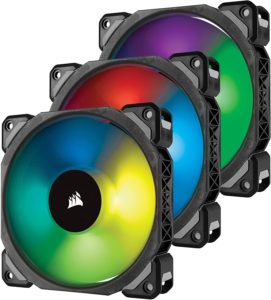
- True, accurate, and stunning RGB colors
- Very quiet
- Impressive build quality
- Requires proprietary hardware: Corsair's RGB controller (included)
RGB builds have become all the rage in recent years. We remember back when transparent case builds were not as popular as they are now — it’s been a while! These days, most cases have, at the very least, a tempered glass window that allows you to peek inside… and what’s inside is often stunning.
Whether your preference lies with a full-on RGB rainbow of colors or a single color setup, this can be achieved with Corsair’s Magnetic Levitation series. In this set of three premium quality fans, aside from the default rainbow hues, you can pick and choose between different color settings.
All the shiny aspects of it aside, this is simply a solid set of fans that will cool your build efficiently regardless of circumstances. These fans are very well made using quality materials and offer seamlessly quiet performance.
This set features a magnetic levitation bearing which dramatically reduces friction. It does so by magnetically levitating the fan blade, which in turn produces lower noise and higher output.
The airflow in this model is a solid 47.3 CFM combined with adjustable 400 to 1,600 RPM. RPM, as well as the color scheme, are both controlled by using the included Corsair Lighting Node PRO controller. You can use lower or higher RPM to either maximize cooling or minimize noise.
While perhaps not the most budget option on our list, these fans have truly earned their place in our hearts and in our builds. If you love RGB builds, check them out!

- One of the best performing static pressure fans in this fan size
- Great fan blade design promotes low RPM while cooling efficiently
- Remarkable lifespan for a static pressure fan
- The attached screws require some elbow grease to screw into the fan
Not everyone wants to spend a lot of money on a case fan, and there’s nothing wrong with that. If you’d rather pick up a few extra fans at a better price than splurge out on high-end options, take a look at Cooler Master’s SickleFlow, specifically the SickleFlow 120 V2 model.
This is a fan that ticks all the right boxes without being overly expensive. It has some of the best cost-to-performance ratios we’ve seen on the current market.
Design-wise it’s fairly stripped back and subdued, with no RGB and a mostly black design, albeit with a holographic fan center.
The cooling in this model is pretty good considering the moderate pricing. It pushes out a lot of cool air at a high pace so much so that you can instantly feel the difference when you turn it on. Some fans have really subtle cooling, but with this one, you truly feel the effect of installing it. You can expect up to 62 CFM at a maximum RPM of 1800. The fans could be quieter, but at 27db they aren’t deafening.
For a sleeve-bearing fan, its life expectancy is actually pretty great. Cooler Master promises around 50,000 hours of usage at average temperatures, which is in the top bracket for a sleeve bearing fan.
While the installation may be a bit of a bother if you’re new to this, we’re certain that anyone can do it. Other than that, this is a really solid fan, especially if you want to be cost-effective when preparing your new build.
- Bright red LED lighting
- Minimal fan noise, even at max speeds
- Fantastic airflow
- Can't change/control the color
Are you a fan of pure gaming builds? They have a specific look about them and they truly look beastly — in a good way! If you love the look of black and red computers, you’re going to like this Corsair Air fan right from the start. But, the fun looks are just a bonus to how quiet and efficient this product is.
It features dark red LED lighting that simply looks awesome in most rigs. The color is static and cannot be controlled or changed, so if you don’t think red is going to work with your build, look into one of the other models of Corsair Air.
While the maximum noise level is measured at 25.2 dB(A), we found this fan to be outstanding in terms of quiet performance. Even at full speeds when pushed to the max, the fan remained just as whisper-quiet as it was from the start.
The good performance stretches past just this fan’s noise levels. With a CFM of 52.19 and RPM of a maximum of 1500, you can expect high airflow without much noise at all. The turbulence in this model is minimal too, so there’s no wobbling or shaking within the case.
These airflow fans perform best in unrestricted spaces and are not very suited to cramped cases with little room. However, as long as you leave at least 3 cm of clearance on either side, you can expect great results. The manufacturer recommends mounting them at the rear or top of your PC case.
Corsair’s Air Series AF120 twin pack of fans does a great job of combining moderate pricing with top-notch performance. We think they’d make a good addition to any build, with an emphasis on mid-range gaming rigs.
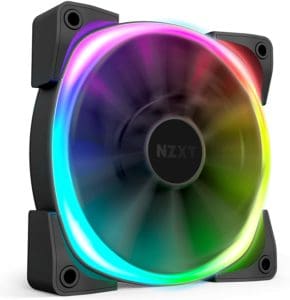
- Endless customization options
- Amazing RGB aesthetic
- Strong cooling with low noise levels
- Only works with NZXT system and hue/fan controller
If budget is not a concern, you might as well go all out and invest in a fan that is bound to keep you happy for years. This fluid dynamic bearing fan will go a long way towards achieving just that.
This is a high-end model and it is reflected in the price. However, for the specs and the looks alone, we wouldn’t regret picking it up and installing it in our own builds at home.
Like with many other RGB models, the first thing you’ll notice will certainly be the design. It has some of the most pleasing eye schemes we’ve seen on the market. The LED lighting is not too bright but still vibrant.
It’s also highly customizable — you can switch between different coloring schemes to match your particular sense of style, ranging from a deep purple to a bright yellow. All of the controls are done via NZXT’s system.
The fans are also adjusted via NZXT’s software, which is nice for some, and a bit less so for others that may prefer using motherboard controls. We found the control panel to be easy to use and switching between 500-1500 RPM was a breeze.
With the use of fluid dynamic bearings, this fan is an expense that once made, will benefit you for years. Some FDB fans have an expectancy of up to 300,000 hours, so this one is almost certain to outlive most other fans.
We recommend NZXT’s AER RGB 2 fan for high-end gaming builds that require the best cooling — awesome looks are just a welcome bonus!
Final Word
Choosing the best 120mm case fan may seem like a tedious task, so we tried our best to take some of that pressure away. Building a new PC is meant to be fun. We hope that with our help, you were able to pick the right fan to suit your particular needs!
Whilst all these fans are great, for the best performance and reliability, we think you’ll like our Best Overall pick: the Noctua Performance Cooling NF-S12B model. It works excellently for the price range and comes from a reputable brand.
Leave us a comment down below if you tried any of these fans or if you have a different model that you love.
WePC is reader-supported. When you buy through links on our site, we may earn an affiliate commission. Prices subject to change. Learn more

